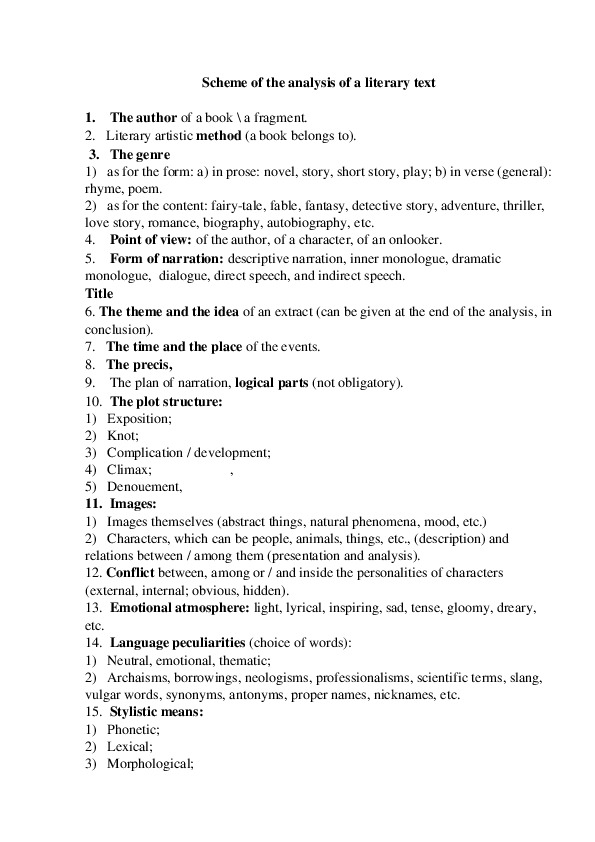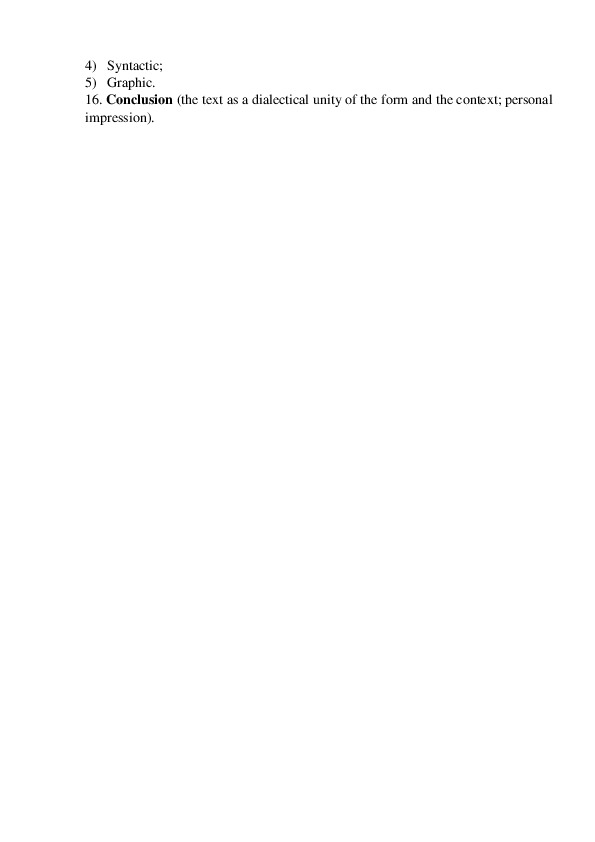Схема анализа литературного текста по английскому языку. Автор, жанр, сюжет, тема и идея, проблема, время и место, структура, конфликт, эмоциональная атмосфера, стилистическое значение, приемы. Scheme of the analysis of a literary text. Scheme of the analysis of a literary text.
Scheme of the analysis of a literary text
1. The author of a book \ a fragment.
2. Literary artistic method (a book belongs to).
3. The genre
1) as for the form: a) in prose: novel, story, short story, play; b) in verse (general):
rhyme, poem.
2) as for the content: fairytale, fable, fantasy, detective story, adventure, thriller,
love story, romance, biography, autobiography, etc.
4. Point of view: of the author, of a character, of an onlooker.
5. Form of narration: descriptive narration, inner monologue, dramatic
monologue, dialogue, direct speech, and indirect speech.
Title
6. The theme and the idea of an extract (can be given at the end of the analysis, in
conclusion).
7. The time and the place of the events.
8. The precis,
9. The plan of narration, logical parts (not obligatory).
10. The plot structure:
1) Exposition;
2) Knot;
3) Complication / development;
4) Climax; ,
5) Denouement,
11. Images:
1) Images themselves (abstract things, natural phenomena, mood, etc.)
2) Characters, which can be people, animals, things, etc., (description) and
relations between / among them (presentation and analysis).
12. Conflict between, among or / and inside the personalities of characters
(external, internal; obvious, hidden).
13. Emotional atmosphere: light, lyrical, inspiring, sad, tense, gloomy, dreary,
etc.
14. Language peculiarities (choice of words):
1) Neutral, emotional, thematic;
2) Archaisms, borrowings, neologisms, professionalisms, scientific terms, slang,
vulgar words, synonyms, antonyms, proper names, nicknames, etc.
15. Stylistic means:
1) Phonetic;
2) Lexical;
3) Morphological;4) Syntactic;
5) Graphic.
16. Conclusion (the text as a dialectical unity of the form and the context; personal
impression).


